Cal Orey's Blog, page 45
January 10, 2023
Soulmates with PAWS--New Book Review -- NOTABLE BOOK
Soulmates with Paws: A Collection of Tales & Tails
Title: Soulmates with Paws: A Collection of Tales & Tails
Author: Cal Orey
Publisher: AuthorHouse
ISBN: 978-1-6655-7857-8
Pages: 238
Genre: Non-Fiction / Pets
Reviewed by: Beth Adams
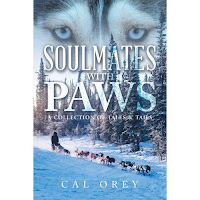
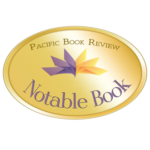 One thing is absolutely clear; that is Cal Orey is a pet lover extraordinaire. She sums up the theme of her book in her final sentence, “Soulmates with Paws is a tribute to the four-leggers in my life, past and present, and throughout the nation and around the globe. It’s the human-companion animal bond that is universal and one that connects us as whole unity on the planet.”
One thing is absolutely clear; that is Cal Orey is a pet lover extraordinaire. She sums up the theme of her book in her final sentence, “Soulmates with Paws is a tribute to the four-leggers in my life, past and present, and throughout the nation and around the globe. It’s the human-companion animal bond that is universal and one that connects us as whole unity on the planet.”
As a renown award-winning author, Cal Orey’s reputation of tackling subjects with an abundance of facts and insights proceeds this book in many ways. It was my pleasure to enjoy the vast details of her personal accounts, the array of scientific facts, and surprising spiritual aspects of dog and cat relationships within a diverse style of original writing, published article reprints, blogpost excerpts, and a forward by Stanley Coren, Ph.D., author of The Intelligence of Dogs and How to Speak Dog.
As for spiritual relationships, she writes, “After a cat dies, they have a telepathic reunion with their owner, according to telepathic animal communicator Raphaela Pope of Berkeley, Calif. That means cat owners may have direct communication beyond what’s normal with their cats.” Here, I thought it was only me that experienced this when my cat died.
Pet owners who understand their furry-friends all have seen remarkable situations of the animal’s awareness alerting their owner to some impending threat; whether it be a fire, an earthquake, or even the malintent of other people posing danger. The ability for dogs and cats to “find their way home” after being lost or when traveling tends to hint of high-sensory awareness of sight and smell and beyond, to some perception of the Earth’s magnetic fields, as was discovered in bees and birds, plus other mammals, where their brain cells contain magnetized iron particles which cells act like built-in compasses.
Although peppered with extraordinary facts about dogs and cats, Cal Orey’s main thrust is in her storytelling. Written in a friendly “fireside” fashion, readers will love each of the many tales throughout this book where she tells of her exploits, her pet loves and losses, and get to know her as a person with a heart, seeking ways to unselfishly help others. A section about homeless people caring for pets points out an interesting observation by Richard Avanzino, president of the San Francisco SPCA. “Because homeless people have this unique bond and special relationship, in many cases, the animals are better cared for than they take care of themselves. And that’s because the animal has stood by their side when society and the world and human beings have discarded them.”
The book contains a dozen quizzes for readers, each enabling them to determine aspects of their own personality, such as being a dog-person or a cat-person, and which breed of dog best suits their personality. Each chapter has appropriate quotes from famous people. And talking about famous people, a chapter is dedicated to many stories of actors, celebrities and authors with their pets. For example, Doris Day started an animal rescue charity and of course, John Steinbeck’s many books referencing his animal companions.
As a whole, Soulmates with paws: A Collection of Tales & Tails is a book that should be promoted on all fronts, especially in mental and physical well-being practices, as powerfully illustrated through personal experiences and relatable concepts. It is without doubt one of those texts that beg to be read time and again, to dig up the nuances you may have missed during the first reading.
January 9, 2023
Essential Oils for Four Seasons (Featured in FIRST FOR WOMEN Book Club)
Scent-sational Essential Oils and Four Seasons READ SAMPLE
The Healing Powers of Essential Oils
 Did you know? Essential oils—including eucalyptus, peppermint, rose, and tea tree-are nature’s ancient medicine, abundant with therapeutic effects. The latest scientific research shows that many popular essential oils and aromatherapy can boost your health and well-being.
Did you know? Essential oils—including eucalyptus, peppermint, rose, and tea tree-are nature’s ancient medicine, abundant with therapeutic effects. The latest scientific research shows that many popular essential oils and aromatherapy can boost your health and well-being.
 Also, specific essential oils are often more popular during each of the four seasons. Here, take a look at how the comfort and calms of scent can help you enjoy Earth’s changes year-round. You can use these oils in different forms, including: Air sprays, candles, cleaning products, diffusers, beauty and hygiene items--and even in cooking foods and beverages! Read on--from The Healing Powers of Essential Oils...
Also, specific essential oils are often more popular during each of the four seasons. Here, take a look at how the comfort and calms of scent can help you enjoy Earth’s changes year-round. You can use these oils in different forms, including: Air sprays, candles, cleaning products, diffusers, beauty and hygiene items--and even in cooking foods and beverages! Read on--from The Healing Powers of Essential Oils...WINTER
 It’s the Season: Shorter days, longer nights and often chilly temperatures call for hot, comfort food. During the holiday season, festive food, like hearty casseroles, soups, muffins, breads, puddings, and pies are commonplace. Then, when the New Year arrives it’s not uncommon to want to eat clean food and get a fresh start. Immune-enhancing, mood-boosting, warming aromas are scents that come with winter-time. They can be found in plant-based salads, vegetarian casseroles, and soups, with lighter desserts.Healing Winter Recipes: Biscotti, breads, cakes and scones are popular foods to warm you up, and essential oils can give recipes extra flavor, especially when seasonal citrus or herbs are not available.Winter Culinary Essential Oils: Anise, clove, cinnamon, ginger, nutmeg, and peppermint.
It’s the Season: Shorter days, longer nights and often chilly temperatures call for hot, comfort food. During the holiday season, festive food, like hearty casseroles, soups, muffins, breads, puddings, and pies are commonplace. Then, when the New Year arrives it’s not uncommon to want to eat clean food and get a fresh start. Immune-enhancing, mood-boosting, warming aromas are scents that come with winter-time. They can be found in plant-based salads, vegetarian casseroles, and soups, with lighter desserts.Healing Winter Recipes: Biscotti, breads, cakes and scones are popular foods to warm you up, and essential oils can give recipes extra flavor, especially when seasonal citrus or herbs are not available.Winter Culinary Essential Oils: Anise, clove, cinnamon, ginger, nutmeg, and peppermint.For 5,000 years plants have been nature’s amazing healers. When the Egyptians were sick they used the oils from plant resins, bark, and spices to repair their bodies.
Ancient Romans soaked their tired, ravaged bodies in healing oils to reduce fatigue and ease painful, aching joints.
Cleopatra’s secret to soft, flawless, nearly ageless skin was said to come from bathing in these essential oils. King Tut was buried with alabaster jars full of them because it was believed these oils would help him through to the afterlife.
Perhaps the most stunning revelation of the miraculous-likehealing abilities of essential oils came during the Middle Ages.
As the deadly bubonic plague spread like wildfire, devastating entire towns and cities, wiping out the lives of millions of men, women, and children . . .
One small group of vigilantes appeared strangely immune to the plague. Known as the four French thieves, they plundered and pillaged among the deathly ill day in and day out, robbing people of their bacteria-ridden possessions. Strangely enough, they never got sick.
It was as if the four thieves had an impenetrable invisible shield that made this lethal predator recoil. Their secret? Legend says the thieves stayed healthy and immune using a special blend of oils they applied during their crime sprees.
In just a moment, you’ll discover how you can get your hands on the coveted blend the four thieves used. (It could come in handy right now for added protection from flu and viruses!) But before we go any further, you should know that while these stories are anecdotal and handed down through history . . .
Today’s scientific research supports theincredible healing potential of these amazing oils.
Not only has science shown their aroma alone can stimulate the pleasure center of your brain, but the wondrous healing properties of essential oils like lemon, chamomile, lavender, and many others can:
 Bolster the immune systemRelieve the pain and discomfort of arthritisEase your body into a sound sleepBanish blue moods and feelings of depressionLower the risk of heart diseaseBoost energy and staminaPotentially slow tumor growthLull your body into Zen-like relaxation
Bolster the immune systemRelieve the pain and discomfort of arthritisEase your body into a sound sleepBanish blue moods and feelings of depressionLower the risk of heart diseaseBoost energy and staminaPotentially slow tumor growthLull your body into Zen-like relaxationResearchers have even discovered an essential oil that can act like ibuprofen! These scientists have found sandalwood can suppress cytokine cell production. You may have heard about cytokine cells in the news recently.
They’re the cells which can create a “cytokine storm” in the body when powerful novel viruses hit, causing the immune system to go into overload and attack itself.
That’s just a fraction of what essential oils can do.
Healing oils from Mother Nature’s medicine cabinet can also help you:
Defy cravings and lose weight — imagine never caving to cravings for chocolate or chips again!Power up your brain and banish brain fog — would you believe rosemary oil does the trick?Ease the pain of a mild sprain — speed recovery with eucalyptus. This essential oil penetrates deep to numb pain and ease soreness, swelling, and bruising.Heal burns, relieve heartburn, settle a queasy tummy, soothe hemorrhoids, ease constipation, and more.There’s just one problem . . .
Essential oils can be so darn confusing.
Which ones do you use for a sore throat . . . aching back . . . colds and flu . . . allergies . . . fever . . . upset stomach . . . insomnia . . . fibromyalgia . . . or to keep your arteries and cells healthy?
Which ones do you use to make your carpet smell fresh . . . clean your windows, oven, or stainless-steel pots and pans . . . or get rid of pesky ants?
How much should you use? Can you blend them together?
Great news! You don’t have to figure outa thing — it’s already been done for you.
There’s no need to spend hours researching healing oils. And you don’t have to spend your hard-earned money joining an essential oils club, shelling out money for a monthly membership or meeting a quota.
Cal Orey, author of the bestselling book The Healing Powers of Honey, has done all the legwork for you!
In her blockbuster NEW book, The Healing Powers of Essential Oils, you get everything you need to unleash the incredible potential of nature’s medicine inside one easy-to-read-and-follow book. Here’s a quick sneak peek:
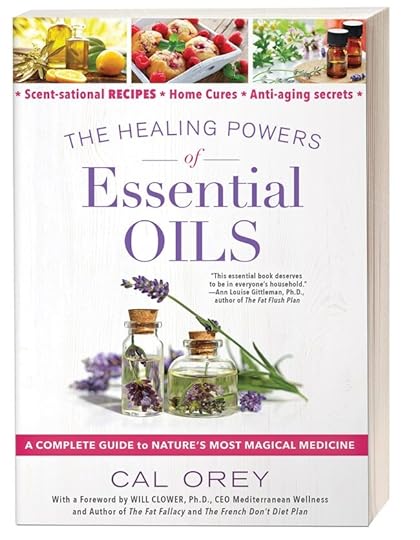 Trouble sleeping? That calls for 2 drops of the oil that comes from this beloved bright red flower mixed with 1 drop each of chamomile and lavender. Gently rub it on and get some rest! Page 193Open your lungs and breathe easier! Need a little extra breathing support with asthma? Apply 2 drops of eucalyptus oil to one cup of this steaming beverage. Inhale and breathe freely. Page 178Protect against contagious and potentially lethal bouts of the flu or nasty viruses with the herb you use on your Thanksgiving turkey! You can add it to your diet or mix up a spray or lotion you can rub into your skin. Page 122When indigestion and gut discomfort strike, reach for the essential oil used to calm delicate digestive tracts — it contains more than 100 powerful healing compounds. Page 65Mosquitoes biting? Try this natural insect repellent — it’s also great for releasing congestion and promoting heart health. Pages 40-41
Trouble sleeping? That calls for 2 drops of the oil that comes from this beloved bright red flower mixed with 1 drop each of chamomile and lavender. Gently rub it on and get some rest! Page 193Open your lungs and breathe easier! Need a little extra breathing support with asthma? Apply 2 drops of eucalyptus oil to one cup of this steaming beverage. Inhale and breathe freely. Page 178Protect against contagious and potentially lethal bouts of the flu or nasty viruses with the herb you use on your Thanksgiving turkey! You can add it to your diet or mix up a spray or lotion you can rub into your skin. Page 122When indigestion and gut discomfort strike, reach for the essential oil used to calm delicate digestive tracts — it contains more than 100 powerful healing compounds. Page 65Mosquitoes biting? Try this natural insect repellent — it’s also great for releasing congestion and promoting heart health. Pages 40-41The Healing Powers of Essential Oils shows you:
Which of the top 20 essential oils to use for every health concern or condition (there’s a complete chapter on each one and loads of recipes, too!)Correct dosages for everything from relieving anxiety and headaches to cleaning arteries and clearing your bowelsHow often to take or reapply healing oilsSecret to combining 2, 3, 4, or more oils for more powerful healingCreative ways to use the oils — massage, sprays, diffusers, cooking, and moreEverything you need to know is in one information-packed book that helps you take control of your health and the health of your loved ones naturally.

The Healing Powers of Essential Oils reveals the hidden medicinal and therapeutic powers of the top 20 essential oils that’ll help you feel better than you have in years.
Think about it: Would you rather rub on a safer, natural pain remedy or pop a pill loaded with side effects? Clean your house with chemicals or put nature’s finest botanicals to work disinfecting and cleaning?
Heck, The Healing Powers of Essential Oils even shows you how to easily cook with these oils. They’re naturally full of robust flavor and healing properties.
Sniff them, eat them, rub them in . . .No matter how you use essential oils, they work.
There are so many easy ways to apply essential oils anywhere, any time — whether you’re at home or at work, in the car, at the grocery store, on the tennis court, or having lunch with your friends.
Make Your OwnAntibacterial Soap

All you need are 4 germ-blasting essential oils and the recipe on page 86 of your FREE BOOK, The Healing Powers of Essential Oils.
Staying at a hotel and concerned about whether the room was properly sanitized? Simply bring a spray bottle full of this natural antiseptic and astringent. Page 122Hemorrhoids causing you trouble? Soothe inflammation and irritation with a homemade compress of chamomile and the oil on page 190.Pollen count making sinus pain flare? Put eucalyptus oil to work on your sinus headaches and dental pain. Get the fast sinus-clearing recipe on page 199.Kid or grandkid fighting acne? Use an undiluted drop of this oil — a natural antibacterial — on blemishes once or twice a day to zap them. Page 183Even just a good, strong sniff of lavender can boost the serotonin in your brain, putting you in a good mood for hours — and it may help you live longer, too. There are so many ways you can use essential oils . . .
Put them in a spray bottle . . . add them to your skin lotion . . . diffuse them . . . fold them into your favorite recipes . . . massage them into your skin . . . roll them on . . . make a compress to apply them . . . bathe in your favorite oils . . . the possibilities go on and on.
Why do nature’s essential oils work so well?For starters, they’re chock-full of disease-fighting antioxidants. As you’ll discover in your FREE COPY of The Healing Powers of Essential Oils, these antioxidants protect the body’s cells from damaging free radicals that can make you sick. Claim your FREE BOOK now to learn more.
The Healing Powers of Essential Oils is a treasure trove of practical information you can start using immediately:
French Scientist Sees Healing Miracle Right Before His Eyes
Rene-Maurice Gattefosse was a French chemist. One day while working in his lab, he scalded his hand. In desperate need of fast relief, he grabbed the nearest liquid — a jar of lavender oil — and applied it. Amazingly, the pain subsided fast and his burned hand healed quickly. Read his story on page 19.
Steaming-hot soup scald your tongue? Heal it fast with the oil that soothes — it’s been called “an easy natural remedy!” Page 201Health worries have you stressed? Massage these 3 essential oils into your skin. It’ll help stimulate the lymphatic system, calm your nerves, and ease muscle tension. Page 202Take the itch out of mosquito bites! Sascha Beck, an Australian naturopath and aromatherapist, swears these 2 oils mixed together are the best remedy she’s ever found. Great for sunburn, too! Page 192Got a cut? Turn to nature’s antiseptic: tea tree oil diluted with apple cider vinegar. Get the exact mixture on page 184. What to expect: less burning and redness, and faster healing.Discover the BEST essential oil for heart health — it has a natural anti-inflammatory effect. Page 153Sweeten your chances of preventing a devasting diagnosis. A study published in the Journal of Agriculture and Food Chemistry reports this essential oil contains many of the same antioxidants that may inhibit the growth of breast and lung cancer cells. Page 142The #1 precaution you should always take before using essential oils that no one ever tells you about. Page 23“Toothpick tip” for getting the best results when cooking with essential oils. Use it for perfect results every time. Never swallow essential oils UNLESS you first check if they’re this quality. Page 23Make your own antibacterial spray! All you need are these 2 oils and some water. Page 138Fight off infection and flu with the famous Four Thieves formula — great for use during superbug outbreaks and when antibiotics don’t work. Page 26Kick sugar cravings to the curb with a quick sniff of this — it works great! Page 161Calm a cough with WHAT? Surprise! Popular pesto ingredient is a natural cough suppressant. Page 35Wait! Before you use eucalyptus oil for relieving sinus issues, you need to know which of the two varieties is best — one is a lot stronger than the other. Page 56Lose up to 7 pounds in 2 days! Try this easy jumpstart and detox your body. Page 168Help protect your body against heart troubles and even breast and lung cancer with vanilla oil — studies show great promise! Page 142LOADED with recipes, insights, advice, and more, The Healing Powers of Essential Oils is the most comprehensive, easy-to-follow book on essential oils — how to use them and which to use — we’ve ever seen.
Your FREE BOOK includes50+ recipes!
Sweet Immunity Booster
Orange Chocolate Bark

Sinfully delicious recipe on page 93.
Claim your FREE BOOK now. Click Here
Your FREE BOOK includes:
Dozens of home remedies to help ease anxiety and stress, improve sleep, visibly smooth wrinkles, stop a scratchy throat, soothe aches and pains, and much more!Over 50 delicious recipes — breakfast, lunch, dinner, soups, salads, and delicious desserts — all with naturally enhanced flavors from nature which heap on the health benefits. There’s even a weight-loss recipe for helping you control cravings on page 163.Decade-by-decade guide to the best essential oils in your 40s, 50s, 60s, and beyond.Handy chart for how much essential oil to use with a carrier oil to dilute the strength.Storage tips for keeping your essential oils fresh.Quick, at-a-glance list of each essential oil and the health concerns that each one may help alleviate for easy reference. And more...January 8, 2023
The Healing Powers of History -- Roots of Nature's Nectar
Honey History: An Ancient Nectar of the Gods
By Cal Orey

Check out the sweet words about the paperback!
The Healing Powers of Honey is offered to you present-day!
(The Biblical Era) Holy Honey Hints From Long Ago
Let’s go way, way back into the past. Take a honey bee’s-eye view of why and how honey is one of the ancient world’s first—and most remarkable—natural wonders.
Indeed, honey is mentioned countless times in the Bible. The phrase “milk and honey” were used at least 21 different places to describe fertility and prosperity of the Promised Land. Honey is also one of the Bible’s good-for-you healing foods. Not only is golden honey found in the Old Testament, but it’s noted in Greek mythology, too.
(2600 B.C.) The Egyptian Seed Of Honey
While myths and legends are mind-boggling, inscription on Sumerian tablets are more believable and hint that the Sumerians were the world’s first beekeepers. But historians say it was the ancient Egyptians who started the craft of tending to bees and reaping rewards. The ancient Egyptians were also known to include honey in cooking, especially for honey cakes, and as offerings to the gods.
(Middle Ages) Blossomed To Ancient Greece And Rome
Once Egypt paved the way for beekeeping, Greece and Rome were next in line. Aristotle, Hippocrates (a Greek physician), and Dioscorides (a master herbalist and doctor of Greek medicine) touted honey’s magic, noting its amazing remedies, including as a wound salve, a cough medicine, an aid to rid one of body lice, and a cure for earache.
The most beloved honey, from the perspective of the Greeks, was honey that came from thyme—growing on the slopes near Athens. Honey was the only sweetener available in Europe at the time, aside from syrups made from dried fruits and herbs. Thyme, an antiseptic her, was believed by its people in the Roman era to provide courage, stamina, and used in the Four Thieves Formula to guard against the bubonic plague.
(The 11th Century A.D.) Honey Sweetens Up Britain And America
So, there is a trail of evidence that hints that exactly when honey made its move from Greece and Rome to the British Isles it was wild bees that deserved credit. Clues have been found on Neolithic pottery remains around 5,000 years back—and beekeeping was likely practiced in England before the Roman invasion. By the 11th century A.D., beekeeping was noted in the Domesday Book list noting the number of hives each landholder owned—to show how important bees were to mankind.
(15th Century) Honey Enters The USA
The European honey bee was brought by man (they did not make the flight themselves) to New England in about 1638. North American natives called these honey bees the white man’s flies. Honey was used to prepare good and beverages, to make cement, to preserve fruits, and for medicinal purposes. But tending to honey bees and gathering honey was not perfected as a fine art because of the challenges of beekeeping. Simply put, the intricate extraction of honey was not an easy process for beekeepers or bees.
(19th and 20th Centuries) The Lure of Honey Grew
Attraction of honey in cooking and for medicinal purposes was a mainstay around the globe after its historical roots spread. Major producers of honey included (and still do) Argentina, China, Mexico, Turkey, and the United States, and the Ukraine.
(21st Century) Honey Is a Mainstay Globally
These days, in the 21st century, much like yesteryear, honey with its healing powers and interest as a natural sweetener and superfood, is in demand by consumers around the world.
Honey Pioneers In The 20th Century
The Worldly Bee Lady: Eva Crane ended up being a dedicated worker bee as a researcher and author on the subjects of bees and beekeepThe Vermont Country Doctor: D.C. Jarvis, touted the nectar of the gods to his Vermont patients. It was part of his bag of folk remedies to prevent and treat illnesses.
The Manuka Honey Guru: Dr. Peter Molan, Ph.D., a New Zealand professor had been at the forefront of the importance of manuka honey and its medicinal merits.
Adapted from The Healing Powers of Honey: A Complete Guide to Nature’s Remarkable Nectar! (Published by Kensington Publishing Corporation) https://www.kensingtonbooks.com/97814...
Cal Orey, M.A., is an accomplished author and journalist. She penned the popular Healing Powers Series. Visit her website at www.calorey.com .
On the Streets (Homeless Pets and Their People)
Excerpt from Soulmates with Paws
By Cal Orey“…A man’s dog stands by him in prosperity, and in poverty, in health, and in sickness. He will sleep on the cold ground, where the wintry winds blow, and snow drives fiercely, if only he may be by his master’s side. "
From coast to coast, in San Francisco or Atlanta, homelessness was a problem in the 20th century and it is today. Both humans and their pets cope with weather changes or living without a home due to a natural disaster. Here is a story that I wrote years ago but it is a timeless one that needs to be heard...
There’s a memorable scene in the movie Down and Out in Beverly Hills where Nick Nolte, a homeless man, loses his little tan dog, Kerouac and soon after attempts to end his life by jumping into a wealthy businessman’s backyard swimming pool. In the hands of this actor, this is a very moving scene. Behind the absurd outcome, however, is the painful truth about down and out people and our society’s often cold and insensitive attitude toward the way the homeless pets and their people really feel.
 Many dog and cat owners—perhaps even you—may one day be just a paycheck or an illness away from becoming homeless. And when a story like this one shows the streets being a home to people and their sleeping bags, pets and shopping carts, you, like, like all pet people may wonder, “How do the homeless and their pets live?” I spent several days on the streets with the disenfranchised and my report, while sad, still serves to illustrate the patience and devotion the companion animal holds for his owner, no matter what the circumstances. In San Francisco during the Depression dogs kept company with the jobless and transient hobos. During the turbulent Sixties dogs freeloaded with the hippies on Haight Street and freeway ramps. And now, amid a recession, pets band together with the homeless in the Tenderloin and at Golden Gate Park. Regardless of the era or locale, it’s the pet, however, who sticks by his or her owner’s side—for better or worse. Statistics prove pets and their people who are homeless, ill or financially destitute are far too common on the streets of San Francisco today. In the Bay Area, there were an estimated 46,000 homeless in 1988. How many own pets? No one knows for sure. But you can bet it’s a lot. Often it is the homeless person rather than society who is blamed when the inevitable doubt arises: “Did he create his plight?” And too frequently, the judgmental question is posed by the homeless themselves who more times than not, have lost their pride and self-worth.
Many dog and cat owners—perhaps even you—may one day be just a paycheck or an illness away from becoming homeless. And when a story like this one shows the streets being a home to people and their sleeping bags, pets and shopping carts, you, like, like all pet people may wonder, “How do the homeless and their pets live?” I spent several days on the streets with the disenfranchised and my report, while sad, still serves to illustrate the patience and devotion the companion animal holds for his owner, no matter what the circumstances. In San Francisco during the Depression dogs kept company with the jobless and transient hobos. During the turbulent Sixties dogs freeloaded with the hippies on Haight Street and freeway ramps. And now, amid a recession, pets band together with the homeless in the Tenderloin and at Golden Gate Park. Regardless of the era or locale, it’s the pet, however, who sticks by his or her owner’s side—for better or worse. Statistics prove pets and their people who are homeless, ill or financially destitute are far too common on the streets of San Francisco today. In the Bay Area, there were an estimated 46,000 homeless in 1988. How many own pets? No one knows for sure. But you can bet it’s a lot. Often it is the homeless person rather than society who is blamed when the inevitable doubt arises: “Did he create his plight?” And too frequently, the judgmental question is posed by the homeless themselves who more times than not, have lost their pride and self-worth.MEET A HOMELESS MAN AND HIS DOGS
Reno, a homeless person, for example, owns two dogs in San Francisco. After a painful divorce, several years ago the anguished man grabbed his guitar and pup, left Colorado, and hit the road. For over five years, Reno has been broke and struggling on the streets of San Francisco with his “two girls”—Tramp, an Australian Shepherd/Bull Terrier and Puget Sound, a black Labrador retriever from Washington state. Often the 38-year-old unkempt man and his two canines can be found on Market Street where they panhandle for food. Some people call the homeless with dogs, like Reno, “scam artists.” Many turn their heads. And others are losing patience and won’t spare a dime. Dog or not. One recent afternoon, in between tears and flashing a snap shot of three dogs, Reno said in between tears he had lost Puget’s daughter, Bingo in an operation. He blamed the doctors for “killing his dog.” Not surprising, his anger and frustration carries over to The City’s Mayor, and the police who often harass the homeless and keep them from living at Civic Center Plaza. Reno’s feelings are common among homeless people. “Maybe, the only one that cares and gives support is their companion animal,” says Richard Avanzino, president of the San Francisco SPCA. “Because homeless people have this unique bond and special relationship, in many cases, the animals are better cared for than they take care of themselves. And that’s because the animal has stood by their side when society and the world and human beings have discarded them.” Why? Why do people (veterans, children, adults with disabilities, single parents, teenagers, part-time employees—without housing, end up on the streets? Experts answer that the primary reason of homelessness is lack of affordable housing. Also other societal factors such as low-paying jobs, inaccessible health care, as well as personal disasters, drug abuse and alcoholism can cause homelessness. Despite the growing problem of homeless people and their pets, it continues. Slowly, pet owners coping with hard times are fighting back, and rediscovering their dignity, civil rights, and freedom.
A DOG-LOVING VETERAN AND HIS TROOP
As a Vietnam veteran living in the Tenderloin, Ray Masterson was homeless for 20 years. With a likeness to John Steinbeck’s fictional character Pirate, a dog-loving man who owned five dogs in Tortilla Flat, he tells his story: “After I go out of the service it was hard to hold down a job, moving from one part of the country to the other. I’ve always had a dog when I’ve been without a home. It’s a fulfillment of being needed. It’s like having a family that I don’t have.” Ray has owned several dogs while homeless: Corky, a Coyote/Dingo; Samson, a Husky/Wolf; Toker, a Pit Bull Terrier/Great Dane; and Bear, a Pit Bull Terrier/Chow Chow. “Corky was a real good panhandler,” he says and laughs out loud. “Bear took right to freight trains. Every animal I’ve has had their own personalities and quirks. I got Bear on the rebound because Corky had been run over by a tractor trailer up in Oregon. I worked my way around for about a month and somebody gave me Bear as a pup. As he grew bigger and stronger I got tired of carrying his food and water plus mine in a backpack—so I built him a pair of donkey saddle bags. He carried his own food and water for over a year. “Bear and I were homeless in The City for about nine months. We slept up in the churchyard mostly, where we had permission from the church. Bear wouldn’t let anybody near me,” explains Ray. Like a proud father, he points out Bear’s distinct facial features, and adds, that as a pup his dog’s face was full of fuzzy fur resembling a California Grizzly Bear. These days the 37-year-old war vet who’d spend his last five dollars on his dog, receives compensation from the government for Post-Traumatic Stress Disorder. Even though Ray’s off the streets for now, he’s busy at work as a homeless advocate.So when society turns their back on people who are down and out it’s understandable why these folks go to man’s best friend for comfort. One man’s words---attributed to Senator George Vest in 1870—from his writing “Tribute To A Dog” says it best:
“…A man’s dog stands by him in prosperity, and in poverty, in health, and in sickness. He will sleep on the cold ground, where the wintry winds blow, and snow drives fiercely, if only he may be by his master’s side. He will kiss the hand that has no food to offer; he will lick wounds and sores that come in encounters with the roughness of the world. He guards the sleep of his pauper master as if he were a prince. When all others desert, he remains.”
January 7, 2023
Healing Powers Series for 2023 (+ Soulmates with Paws)
By Cal Orey

UPDATE: About a year ago, COFFEE (paperback) went back to press for a 5th printing, HONEY (mass market) and VINEGAR (paperback) went back to press (again), too. Plus, ESSENTIAL OILS and SUPERFOODS made their way back to 3rd printings... HERBS & SPICES is on the shelves (and it was a pick for Woman's World Magazine's Book Club). In December 22, HONEY (paperback) format was graced with a #1 Best Seller banner for weeks the Amazon website... And that's not all...
Check out my newest book release: Soulmates with Paws (3 formats; Ebook 2.99 sale, softcover, and hardcover with a dust jacket! Perfect for a V-Day gift book). And January is National Hot Tea Month; Honey is good for winter woes and superfoods boost immune health as do companion animals in the animal & adventures book!
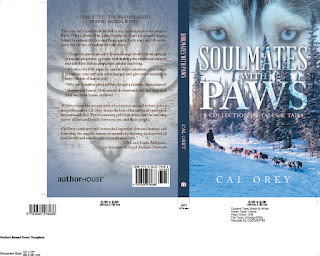 So, sit down, cozy up with a cup of tea with a drizzle of honey, cuddle up with your cat and/or dog and savor the new Soulmates with Paws digest!
So, sit down, cozy up with a cup of tea with a drizzle of honey, cuddle up with your cat and/or dog and savor the new Soulmates with Paws digest!Drawing on the 21st century honey buzz, bestselling author Cal Orey reveals enlightening honey home remedies, straight from the book The Healing Powers of Honey: A Complete Guide to Nature's Remarkable Nectar! (Kensington)
Here are common health ailments from A to Z and amazing at-home honey cures. These are tried-and-true folk remedies based on scientific studies, real-life stories, medical doctors, researchers, and beekeepers. But caution, consult your health-care practitioner before putting to work any honey cure.
1 ALLERGIES (Stop seasonal misery): Dealing with annoying sneezing, a runny nose, and coughing is no picnic, thanks to seasonal pollen. But honey may come to your rescue.What Honey Rx to Use: Try eating a tablespoon of locally produced honey. Proponents of honey tell me that your immune system will get used to the local pollen in it (it should be within a 50-mile radius from where you live).Why You'll Bee Happy: By taking the honey cure, you may lose your allergy symptoms. It's worth the effort and is less pricey than a visit to the doctor or an allergist. Honey may enhance the immune system to build up a better arsenal against airborne allergens--and help you breathe easier. Honeycomb may line the entire breathing tract.
2 ANXIETY (Beat the jitters monster): When anxiety hits (often worsened by stress) you know it like when an earthquake strikes. Anxiety can wreak havoc on your nervous system and up your odds of experiencing heart disease, stress eating, and other health problems.What Honey Rx to Use: If you're under pressure and feeling high anxiety or sense a stressful event is in the works, make a cup of chamomile tea. Put in 1 teaspoon of your favorite honey. Repeat twice a day as needed.
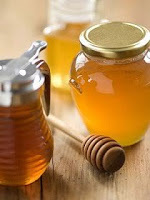 Why You'll Bee Happy: Honey--all hundreds of varietals--is touted by folk medicine healers for its calming effects. The natural superfood can help sooth your nerves rather than put you in higher anxiety mode. The relief if provides may be due to its multiple vitamin B content--anti-stress vitamins.
Why You'll Bee Happy: Honey--all hundreds of varietals--is touted by folk medicine healers for its calming effects. The natural superfood can help sooth your nerves rather than put you in higher anxiety mode. The relief if provides may be due to its multiple vitamin B content--anti-stress vitamins.
3 COUGH (Outfox irritating hacking): A cough is another unwelcome visitor and can make you feel terrible. Let's face it, cough medicine can be pricey, doesn't taste good, and may or may not do its job.What Honey Rx to Use: A teaspoon of buckwheat honey is recommended before bed. Or you can make syrup of 1 teaspoon lemon juice, 1 teaspoon honey, and 1 teaspoon apple cider vinegar. Repeat each remedy as needed.Why You'll Bee Happy: A group of Penn State College of Medicine researchers discovered that honey may be the cure. The findings showed that buckwheat honey at bedtime was more powerful for curing a cough in children than a cough suppressant found in over-the-counter medications. It is believed that honey will act as a sedative to the nervous system.
4 ENERGY DRAIN (Beat low energy): Getting your cough under control is a good thing, but then what if your energy plummets? Liquid gold may be the answer again.What Honey Rx to Use: Each morning include a teaspoon of bee pollen in your breakfast. Go ahead and take it solo. Or try The Honey Association's Energy Drink recipe: ¼ pint orange juice, ¼ pint natural yogurt, 2 tablespoons clear honey. Place all the ingredients in a liquidizer and blend until smooth. Pour into two tall glasses. Serves two people.Why You'll Bee Happy: Honey is a source of natural unrefined sugars and carbohydrates, which are easily absorbed by the body. That means, you'll get a quick energy boost with long-lasting effects. Athletes include it in their daily diets. It was even used by runners at the Olympic Games in ancient Greece.
5 HEADACHE (Bye-bye, pain): Fatigue and headaches are not to be taken with a grain of salt, because it can hurt oh, so bad. There are different types of headaches, and some kinds may benefit from the honey bee's gift.What Honey Rx to Use: One cup of tea with 1 teaspoon of honey (the darker the varietal the better) is the remedy. Repeat as needed. Also, drink plenty of water and relax.Why You'll Bee Happy: "The way honey might work for tension headaches," says New York Headache Center's Alex Mauskop, M.D., "is by treating hypoglycemia, which can cause tension and migraines." He adds that some antioxidants can help prevent headaches, as can magnesium and vitamin B. So turning to antioxidant-rich honey may be a sweet remedy.
6 INSOMNIA (Find sweet dreams): Getting rid of a headache is a challenge, but not getting adequate shut-eye can have long-term effects, too.What Rx to Use: Take 1 or 2 teaspoons of your favorite honey, especially before going to bed. Try sipping a cup of 2 percent low-fat milk with a dash of cinnamon. The tryptophan in milk will help to calm you.Why You'll Bee Happy: It's a magic trick, according to The Honey Revolution author Ron Fessenden, M.D., providing needed glycogen to the liver so the brain doesn't go in search of extra fuel in the earl A.M. hours when you should be in Dreamland. "Consuming honey before bedtime also reduces the release of adrenaline, a catecholamine that raises blood pressure and heart rate," adds the honey guru.
7 SORE THROAT (Take the sting away): Not sleeping is miserable, but a sore throat can drag you down, too, where don't feel like walking or talking. Honey has been used as a home for centuries to help sooth one of the symptoms associated with a common cold--namely, a killer sore throat.What Honey Rx to Use: For relief of symptoms, take a spoonful of your buckwheat honey, as often as you need, to relieve irritation. In between, sip a cup of tea with honey. Also, try pure honeycomb and honey sticks. Don't forget all-natural honey-lemon lozenges, which also coat the throat for quick relief.Why You'll Bee Happy: One, honey will coat your sore throat, the symptom of the cause. Two, the antibacterial and anti-inflammatory properties will help heal the culprit causing your pain.
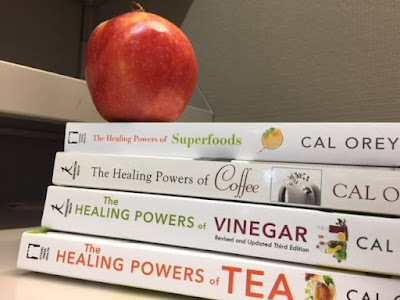 8 WAIST WHITTLER (Blast belly fat): Twitches to tummy bulge... if you have a bulging tummy, you'd probably consider a sore throat is easier to get rid of. But wait; there are things you can do to get a flat tummy.What Honey Rx to Use: Both morning and night, drink an 8-ounce glass or mug of tea (dandelion or parsley boasts diuretic effects), with a teaspoon of honey and a teaspoon of apple cider vinegar. Team this potion with grazing and watch your fat and sugar intake.Why You'll Bee Happy: Honey and apple cider vinegar contain the bloat-busting mineral potassium. Also, turning to honey will help you to eat fewer sugary treats and enjoy a flatter stomach.
8 WAIST WHITTLER (Blast belly fat): Twitches to tummy bulge... if you have a bulging tummy, you'd probably consider a sore throat is easier to get rid of. But wait; there are things you can do to get a flat tummy.What Honey Rx to Use: Both morning and night, drink an 8-ounce glass or mug of tea (dandelion or parsley boasts diuretic effects), with a teaspoon of honey and a teaspoon of apple cider vinegar. Team this potion with grazing and watch your fat and sugar intake.Why You'll Bee Happy: Honey and apple cider vinegar contain the bloat-busting mineral potassium. Also, turning to honey will help you to eat fewer sugary treats and enjoy a flatter stomach.
So go ahead and use the type of honey advised or your own preference; all-natural, raw honey, dark varietals are recommended for best results. (Warning: To avoid infant botulism, do not fee honey to an infant.)
January 6, 2023
Celebrate National Hot Tea Month! Grab a Copy of The Healing Powers of Tea
 The way to stay lean is to not over indulge but choose a sandwich and savor the tea and more tea, of course! Perhaps a scone to take with you for a later treat is certainly okay in my book (literally). For more tea stuff, take a look at the promotion for the perfect GIFT BOOK!
Several years ago, a neighbor friend of mine was making lunch (not at a fancy tearoom but a rustic mountain cabin) when I paid her a visit. It was a basic 20th century budget-friendly egg salad sandwich. She used plain white bread (the cookie cutter generic type), white eggs, basic mayo, and salt with a side of potato chips. The sandwiches were sliced in half filled with smooth, mushy yellow goo. I was offered a half triangle shape (which I do like) but I passed and ate a boiled egg sprinkled with grouneaterd pepper. One, because I’m a picky . Two, I’m one of those post-hippie girls and a purist snob. Translation: Brown eggs, dark greens, whole grain bread, and fresh herbs. But I didn’t try and preach my eating style and mum was the word.
The way to stay lean is to not over indulge but choose a sandwich and savor the tea and more tea, of course! Perhaps a scone to take with you for a later treat is certainly okay in my book (literally). For more tea stuff, take a look at the promotion for the perfect GIFT BOOK!
Several years ago, a neighbor friend of mine was making lunch (not at a fancy tearoom but a rustic mountain cabin) when I paid her a visit. It was a basic 20th century budget-friendly egg salad sandwich. She used plain white bread (the cookie cutter generic type), white eggs, basic mayo, and salt with a side of potato chips. The sandwiches were sliced in half filled with smooth, mushy yellow goo. I was offered a half triangle shape (which I do like) but I passed and ate a boiled egg sprinkled with grouneaterd pepper. One, because I’m a picky . Two, I’m one of those post-hippie girls and a purist snob. Translation: Brown eggs, dark greens, whole grain bread, and fresh herbs. But I didn’t try and preach my eating style and mum was the word.
Traditional egg salad sandwiches include chopped hard-boiled eggs, chopped, mayonnaise. It can be used on top of greens, too. Egg salad also can be dished up with a creative twist including herbs, spices, and an array of artisan breads. The roots of egg salad sandwiches traces back to John Montagu, 4th Earl of Sandwich, claim food historians who believe it’s about a century old. But I’m switching it up 21st century-style for all generations. Here is my healthy version of egg salad inspired by good neighbors and good food.
Gourmet Egg Salad Sandwiches4 large brown, organic boiled eggs4 tablespoons mayonnaise with olive oil2-3 teaspoons red onion, chopped (optional)1/2 cup organic spring baby spinach/kale mixGround pepper and fresh herbs (your choice) to taste½ cup Roma tomatoes, slicedFrench artisan baguette, sliced (or whole grain sliced bread, croissant, bagel)Chives, chopped (optional)In a bowl, lightly mix boiled eggs, chopped, with mayonnaise, onion, spices and herbs. Keep in chunky. Put in fridge for about 30 minutes. Spread baguette slices with egg salad. Top with chives. Serves 6. * You can also slice a baguette (or bagel) in small submarine sandwich size. Top one slice with lettuce, egg salad mixture, lettuce, and tomatoes. Cover and eat whole or slice. Serves two.
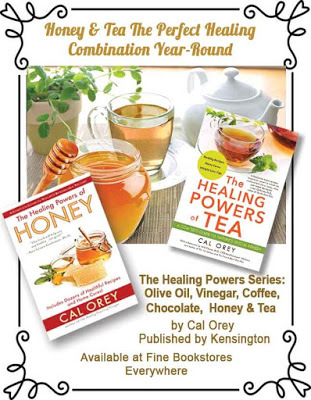 Cold and hot egg salad for January? Both ways with this egg sandwich treat work and provide a bit of a gourmet flair with a rustic touch. Perfect for living and eating in the mountains when you never know what type of weather you’re going to get so it’s best to be prepared. And eggs are good for you! They're part of the top ranked diet of 2019--the Mediterranean diet, a theme in the Healing Powers Series.— Cal Orey, M.A., is an author and journalist. Her books include the Healing Powers Series (Vinegar, Olive Oil, Chocolate, Honey, Coffee, Tea, and Superfoods) published by Kensington. (The collection has been featured by the Good Cook Book Club.) Her website is www.calorey.com -- Check out her new book releases!
Cold and hot egg salad for January? Both ways with this egg sandwich treat work and provide a bit of a gourmet flair with a rustic touch. Perfect for living and eating in the mountains when you never know what type of weather you’re going to get so it’s best to be prepared. And eggs are good for you! They're part of the top ranked diet of 2019--the Mediterranean diet, a theme in the Healing Powers Series.— Cal Orey, M.A., is an author and journalist. Her books include the Healing Powers Series (Vinegar, Olive Oil, Chocolate, Honey, Coffee, Tea, and Superfoods) published by Kensington. (The collection has been featured by the Good Cook Book Club.) Her website is www.calorey.com -- Check out her new book releases!
January 5, 2023
Are Pets Weather Forecasters? (Excerpt from the NEW Book Soulmates with PAWS)
By Cal Orey
Whether it’s ESP, superior senses, intuition or a change in routine, your cat or dog (or humans) may sense hurricanes and tornadoes, and you should know about it.
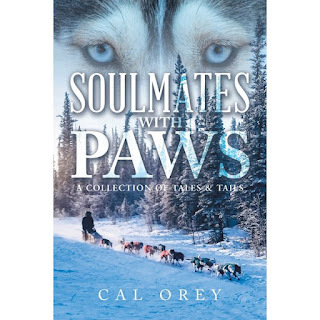 At noon on a stormy spring day in Austin, Texas, several household cats started acting strangely. “I was in bed watching the weather channel on TV,” recalls cat owner Janet Shon. “My cats wanted to hide underneath the covers.” The heavy rains and howling winds continued, causing panic in her house full of pets. Eventually, she put them into carriers to calm them, and took cover under the stairwell. “Usually, my cats don’t mind being in the crates during bad weather,” she says, “but this time, they were chatting nonstop and wanted to be next to me.”
At noon on a stormy spring day in Austin, Texas, several household cats started acting strangely. “I was in bed watching the weather channel on TV,” recalls cat owner Janet Shon. “My cats wanted to hide underneath the covers.” The heavy rains and howling winds continued, causing panic in her house full of pets. Eventually, she put them into carriers to calm them, and took cover under the stairwell. “Usually, my cats don’t mind being in the crates during bad weather,” she says, “but this time, they were chatting nonstop and wanted to be next to me.”
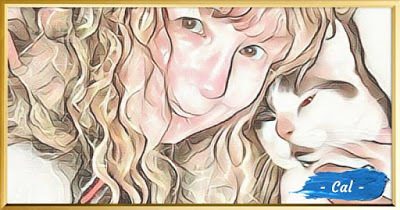 Several hours later, on May 27, 1997, an extremely rare and dangerous tornado (classified as an F-5), with winds measuring over 260 mph, touched down 40 miles to the North of Shon in Jarrell, Texas. Twenty-seven people died in Jarrell. Multiple tornadoes also ripped through the Austin area, killing two people. “It took the roof off the Albertsons’ store,” says Shon with awe. She and her cats survived without a scratch. What made Shon’s cats react in such a way? Some say it’s ESP (extra sensory perception), or a sixth sense. Others claim cats aren’t gifted, just blessed with well-developed or heightened senses—scent, sound and sight, that are far superior to our own. However you see it, cats have earned their supernatural reputation throughout history. In ancient Egypt, felines were worshipped as gods, and killing a cat was a crime punishable by death. Even modern society gives credence to the idea that cats “know” things. During World War 11, “British families found that their cats were the best warning system for impending danger,” notes Dale Koppel, author of Amazing But True Cat Facts. “They showed unmistakable signs that something was about to happen even before the air sirens were sounded. Their hair would stand on end, or they’d spit or wail. Some would head straight for the nearest shelter.” Many people who live through terrible disasters—hurricanes, tornadoes, fires or earthquakes—believe their cats knew something before these disasters struck. But whether or not cats really predict danger is still an open debate. So, what will you do the next time Felix starts acting strange? Will you roll your eyes, or head for high ground? Read on and decide for yourself. While you discover how uncanny and sensitive our soulmates with paws can be brew a cup of tea!
Several hours later, on May 27, 1997, an extremely rare and dangerous tornado (classified as an F-5), with winds measuring over 260 mph, touched down 40 miles to the North of Shon in Jarrell, Texas. Twenty-seven people died in Jarrell. Multiple tornadoes also ripped through the Austin area, killing two people. “It took the roof off the Albertsons’ store,” says Shon with awe. She and her cats survived without a scratch. What made Shon’s cats react in such a way? Some say it’s ESP (extra sensory perception), or a sixth sense. Others claim cats aren’t gifted, just blessed with well-developed or heightened senses—scent, sound and sight, that are far superior to our own. However you see it, cats have earned their supernatural reputation throughout history. In ancient Egypt, felines were worshipped as gods, and killing a cat was a crime punishable by death. Even modern society gives credence to the idea that cats “know” things. During World War 11, “British families found that their cats were the best warning system for impending danger,” notes Dale Koppel, author of Amazing But True Cat Facts. “They showed unmistakable signs that something was about to happen even before the air sirens were sounded. Their hair would stand on end, or they’d spit or wail. Some would head straight for the nearest shelter.” Many people who live through terrible disasters—hurricanes, tornadoes, fires or earthquakes—believe their cats knew something before these disasters struck. But whether or not cats really predict danger is still an open debate. So, what will you do the next time Felix starts acting strange? Will you roll your eyes, or head for high ground? Read on and decide for yourself. While you discover how uncanny and sensitive our soulmates with paws can be brew a cup of tea!
(Click on and see how tea can help you chill like pets)
SO IS A STORM COMING? Are pets really four-legged weather forecasters? So, what about hurricane warnings? While scientists use wind patterns, barometric pressure, sea surface temperatures and other climate factors to predict hurricanes, fishermen watch their cats. In fact, cats have long been considered good luck on ships for their ability to ward off storms, sea monsters and ghosts. Europeans of the past centuries believed cats “knew” the way home and would reveal the direction by sleeping on the side of the ship that was closest to port. Gail Beecher, a veteran cat breeder from Needville, Texas, got a special warning before Tropical Storm Frances hit the Texas coast on September 9, 1998. Some of Beecher’s pregnant cats began to go into early labor. “When the barometer shifts during bad weather my cats always go into labor early,” she says. “I knew the storm was coming this way.” Wind speeds reached a maximum of 65 mph, and one person died due to the intense flooding of the Gulf Coast. “All cats are extraordinary sensitive to even the smallest changes in the weather,” writes Koppel who claims, “you can throw away your thermometers and stop watching weather forecasts on TV.” A resident of Kansas City, Missouri agrees, “I have noticed before a tornado (during thunder, wind, hail and lightning) animals do lie close to the ground and pant. The bigger and fatter the dog and cat, the more it seems to affect them. Also, they sometimes put their head on the floor.” According to Koppel, French fishermen watch their cats’ body language to get a weather report. “They watch their cats closely to predict weather changes,” he says. “Rain? Watch for your cat to pass her paw behind the ear during grooming. Windy? Your cat will clean her nose. Low tide? Wide pupils, of course. When will the bad weather end? When your cat twists and turns.” Sound silly? Perhaps not, says John C. Wright, PhD, certified animal behaviorist from Macon, Georgia, and author of Is Your Cat Crazy: Solutions from the Casebook of a Cat Therapist, who’s fascinated by it all. However, to be certain that this is a reliable weather source, Wright says, a group of cats and their body positions should be examined carefully in a weather study for conclusive scientific evidence. In other words, scientific studies are needed...MORE in Soulmates with Paws (Available in ebook, softcover, hardcover).
January 3, 2023
Stuff Your Pantry Before Winter Storms Hit! For People (and Pets)
A Storm is a Comin'! Stock Up with Superfoods
For People (and Pets)
Store up food stuff before your favorite non-perishable foods are AWOL. If you want peace of mind for you and your companion animals get busy before a snowstorm or flooding happens! You'll be happier and healthier knowing you have enough water, dried food that you like, and pet food.
So, why exactly do people think stocking a pantry with a tin of Spam or SpaghettiOs in a can are basic ER staples? It's the 21st century! If the power goes out, unless you have a generator, you're not going to have access to refrigerated food or hot stuff (unless you have a gas stove and the gas is on). It's time to think outside of the can and stock up on the good superfoods you'll enjoy eating and get nutrients, too.
How? How do you put together a nutritious ER stash? A new study published in Journal of the American College of Cardiology shows a Pesco-Mediterranean diet – and intermittent fasting -- is ideal for perfecting heart health.
A bonus: The fact is, when disaster strikes, lowering blood pressure and cholesterol numbers is vital as stress soars. This heart-healthy regimen has vegetables, fruits, nuts, seeds, legumes, whole grains, and extra-virgin olive oil with fish/seafood and fermented dairy products. Beverages include water, coffee, and tea. It’s a perfect plan for an emergency pantry.'
As the author who penned the Healing Powers series I must say if I don't have hot tea I'll reach for a ready-to-drink brew. It's not as healthy as a cup of black or herbal tea (RTD contains tea but it also has sugar and caffeine) but it can make you feel better. Ditto with no java. But dark chocolate, and superfoods do the trick...
9 Superfood Groups to the Rescue
What’s more, bestseller “Superfoods Rx” author Dr. Steven G. Pratt, MD points out, “packaged foods have too much fat and trans-fat, sodium, sugar, and other nutrition negatives” but adds “health-promoting choices” are pantry smart. Check out this grocery list recommended by dietitian Fisher -- based on the Mediterranean diet.F
ruits. Opt for canned fruit packed in water or unsweetened natural juices and dried fruit with no sugar added.
no sugar added. 2. Vegetables. Russet and Sweet potatoes have a long shelf life. Opt for canned (low-sodium) varieties and all-natural marinara sauce – a versatile staple.
3. Grains. Breads, oats, whole grain cereals and pasta.
4. Fish & Seafood. Consider water-packed tuna and salmon.
5. Eggs, Poultry, Cheese, & Yogurt, Milk. Try powdered eggs or scramble egg mix. Opt for canned chicken or turkey. Soft cheese like Brie doesn’t have to be refrigerated, nor does powdered yogurt or powdered milk.
6. Nuts, Seeds & Legumes. Good protein sources are beans, nuts, nut butters, and sesame seeds.
7. Herbs & Spices. For taste and nutrients use basil, cinnamon, garlic, pepper, and turmeric.
8. Meats & Sweets. Try canned all natural beef. Stock honey and all-natural protein bars.
9. Water & Wine. Bottled water is essential (and wine in moderation is calming).
Picks for Annoying Ailments
Healthful superfoods can quell common conditions, so Fisher recommends:
· Cold/flu: You can't go wrong with chicken soup to soothe a sore throat. Try nutritious organic brands in quart brick packs rather than high-sodium canned varieties.
· Fatigue: Look for a balance of lean protein and whole-food carbs to keep stable blood sugar and energy levels. Go for water-packed canned tuna on whole grain crackers or almonds with a fruit cup.
· Insomnia: Herbal teas can be of help when sleep is evasive, as can a glass of milk, or a hard-boiled egg. Both have tryptophan, a protein that can help induce slumber.
· Stomach woes: Grab Ginger ale or peppermint tea, both can ease queasiness.
· Stress: Try dark chocolate for antioxidant properties and brain-calming benefits.
In a nutshell: Before disaster strikes – go shopping! Forage for a flavorful, well-balanced ER stockpile for health and peace of mind.
Checklist Storage Tips
Read on -- from the Centers of Disease Control and Prevention:
ü A crisis can disrupt the food supply, so have at least a 3-day supply of food on hand.
ü Keep foods that: Have a long storage life…
ü …And require little or no cooking or refrigeration, in case utilities are disrupted.
ü Check the expiration dates on foods.
ü Store at least a 2-week supply of water -- 1 gallon (16 cups) -- per day for each person and pet.
Stuff Your Pantry Before Winter Storms Hit!
A Storm is a Comin'! Stock Up with Superfoods
Store up food stuff before your favorite non-perishable foods are AWOL. If you want peace of mind for you and your companion animals get busy before a snowstorm or flooding happens! You'll be happier and healthier knowing you have enough water, dried food that you like, and pet food.
So, why exactly do people think stocking a pantry with a tin of Spam or SpaghettiOs in a can are basic ER staples? It's the 21st century! If the power goes out, unless you have a generator, you're not going to have access to refrigerated food or hot stuff (unless you have a gas stove and the gas is on). It's time to think outside of the can and stock up on the good superfoods you'll enjoy eating and get nutrients, too.
How? How do you put together a nutritious ER stash? A new study published in Journal of the American College of Cardiology shows a Pesco-Mediterranean diet – and intermittent fasting -- is ideal for perfecting heart health.
A bonus: The fact is, when disaster strikes, lowering blood pressure and cholesterol numbers is vital as stress soars. This heart-healthy regimen has vegetables, fruits, nuts, seeds, legumes, whole grains, and extra-virgin olive oil with fish/seafood and fermented dairy products. Beverages include water, coffee, and tea. It’s a perfect plan for an emergency pantry.'
As the author who penned the Healing Powers series I must say if I don't have hot tea I'll reach for a ready-to-drink brew. It's not as healthy as a cup of black or herbal tea (RTD contains tea but it also has sugar and caffeine) but it can make you feel better. Ditto with no java. But dark chocolate, and superfoods do the trick...
9 Superfood Groups to the Rescue
What’s more, bestseller “Superfoods Rx” author Dr. Steven G. Pratt, MD points out, “packaged foods have too much fat and trans-fat, sodium, sugar, and other nutrition negatives” but adds “health-promoting choices” are pantry smart. Check out this grocery list recommended by dietitian Fisher -- based on the Mediterranean diet.F
ruits. Opt for canned fruit packed in water or unsweetened natural juices and dried fruit with no sugar added.
no sugar added. 2. Vegetables. Russet and Sweet potatoes have a long shelf life. Opt for canned (low-sodium) varieties and all-natural marinara sauce – a versatile staple.
3. Grains. Breads, oats, whole grain cereals and pasta.
4. Fish & Seafood. Consider water-packed tuna and salmon.
5. Eggs, Poultry, Cheese, & Yogurt, Milk. Try powdered eggs or scramble egg mix. Opt for canned chicken or turkey. Soft cheese like Brie doesn’t have to be refrigerated, nor does powdered yogurt or powdered milk.
6. Nuts, Seeds & Legumes. Good protein sources are beans, nuts, nut butters, and sesame seeds.
7. Herbs & Spices. For taste and nutrients use basil, cinnamon, garlic, pepper, and turmeric.
8. Meats & Sweets. Try canned all natural beef. Stock honey and all-natural protein bars.
9. Water & Wine. Bottled water is essential (and wine in moderation is calming).
Picks for Annoying Ailments
Healthful superfoods can quell common conditions, so Fisher recommends:
· Cold/flu: You can't go wrong with chicken soup to soothe a sore throat. Try nutritious organic brands in quart brick packs rather than high-sodium canned varieties.
· Fatigue: Look for a balance of lean protein and whole-food carbs to keep stable blood sugar and energy levels. Go for water-packed canned tuna on whole grain crackers or almonds with a fruit cup.
· Insomnia: Herbal teas can be of help when sleep is evasive, as can a glass of milk, or a hard-boiled egg. Both have tryptophan, a protein that can help induce slumber.
· Stomach woes: Grab Ginger ale or peppermint tea, both can ease queasiness.
· Stress: Try dark chocolate for antioxidant properties and brain-calming benefits.
In a nutshell: Before disaster strikes – go shopping! Forage for a flavorful, well-balanced ER stockpile for health and peace of mind.
Checklist Storage Tips
Read on -- from the Centers of Disease Control and Prevention:
ü A crisis can disrupt the food supply, so have at least a 3-day supply of food on hand.
ü Keep foods that: Have a long storage life…
ü …And require little or no cooking or refrigeration, in case utilities are disrupted.
ü Check the expiration dates on foods.
ü Store at least a 2-week supply of water -- 1 gallon (16 cups) -- per day for each person and pet.
January 2, 2023
Wayward Pets: How Do Dogs and Cats Find Their Way Back Home?
By Cal Orey
HOMEWARD BOUND
(Excerpt from Soulmates with Paws)

One spring day in a small town in Illinois, a black cat named Zephyr disappeared. “I was heartbroken, as was the rest of my family. He was truly my friend at that time,” recalls Cassandra Fink. Zephyr’s owners spend hours combining their one-and-a-half-acre yard and apple orchard looking for their beloved pet and fearing the worst. “We realized he must have run away.”
Then one night the cat’s owners heard a soft meow outside and found Zephyr standing at the door looking well-muscled but extremely skinny. “The semi-trucks for the trucking company next door traveled back and forth to the city of Kankakee. We realized then that he had hopped aboard a flatbed semi and ended up there,” explains Fink. It had taken the cat two weeks to trek the 30 miles home!
Zephyr is like countless cats worldwide who find their way home—even when home is hundreds of miles away. Many cat owners have tales of incredible journeys, and most have no idea how their cats do it. A number of these cases come to the public’s attention when they are reported in newspapers, but many more go unreported and unstudied. Those that are studied teach us a lot about our feline companions but leave us with as many questions as answers.
AN AMAZING HOMING INSTINCT
Researchers really don’t know how these extraordinary cats find their way home. But they do have some idea about how some other legendary travelers navigate. Birds and bees seem to navigate by the sun, stars or moon. As for salmon, which swim all the way from the open ocean back to the very stream where they spawned, researchers think they smell their home waters. Other animals can orient themselves with the help of magnetized cells in the brain, which act like tiny compasses, and help them decide which way is north. Marine mammals may even use the sounds that rumble through the seas to get their bearings. “Cats may have similar abilities,” says renowned author and animal expert Michael Fox, Ph.D.
In a classic study done more 75 years ago, zoologist F.H. Herrick, of Cleveland, Ohio, took his own cat in a bag from his home to his office five miles away, traveling by streetcar. When he let the cat out of the bag, the cat fled. However, the cat returned home the same night, even though he had been left in an area he was unfamiliar with. Puzzled by this astonishing ability, Herrick put the cat in a closed container, took him various distances from his house—from one to three miles—and released him. The result: The cat came home in a variety of situations and from any point on the compass. How exactly do cats do that?
THE RADAR THAT GETS CATS HOME
Animal experts also say the sense cats use most often and that gives them the most information is scent. By sniffing bushes and buildings along their route, cats can use the information they glean to help find their way home.
“Cats have a very sensitive nose that equal dogs, and their eyesight is certainly better,” says Ted Cohn, DVM, at University Hills Hospital in Denver CO. “Certainly for short distances visual clues are very important.”
Cats also use physical cues from nature, such as the angle of the sun to find their way. “They may be able to use the sun as a compass, as well as sensing a time difference between their own internal circadian clock and the local time. But the father away they are from home base, the greater will be the discrepancy,” says Fox. Therefore, visual aids and memory don’t completely explain how lost cats find their way over long distances.
That’s why many researchers believe cats are sensitive to the earth’s magnetic fields. This sensitivity may enable them to find their way back home—even from hundreds of miles away. “A magnetic field can be described as a set of imaginary lines that indicates the direction a compass needle would point to at a particular spot,” explains Psychobiologist David Jay Brown of Ben Lomond, CA.
It’s also believed that cats possess a homing mechanism that is triggered by brain cells containing magnetized iron particles. As they do with other mammals, these cells act like built in compasses. So, some cats, like a wayward senior striped tabby named Alfie, may have been guided by the influence of earth’s magnetic fields.
Early one summer, Alfie’s owner, Elaine Hahn, moved to a new home in Palo Alto, CA, about five miles away from her old home. For the first few weeks after the move, Hahn received regular phone calls from her old neighbor, who told her, “Alfie is here. Do you want to come and pick him up?” For two weeks, Hahn got into her car and drove five miles to go pick up Alfie. He had not only hiked five miles each time to get back to his old house, he had crossed six lanes of traffic to do so!
Alluring as it is though, the magnetic field theory doesn’t entirely explain the homing instinct, according to Brown. “If you have a compass and you’re not in the middle of nowhere, you can’t figure out the direction of your destination unless you knew your position in a certain geographical area. So, it’s really a big mystery.”



